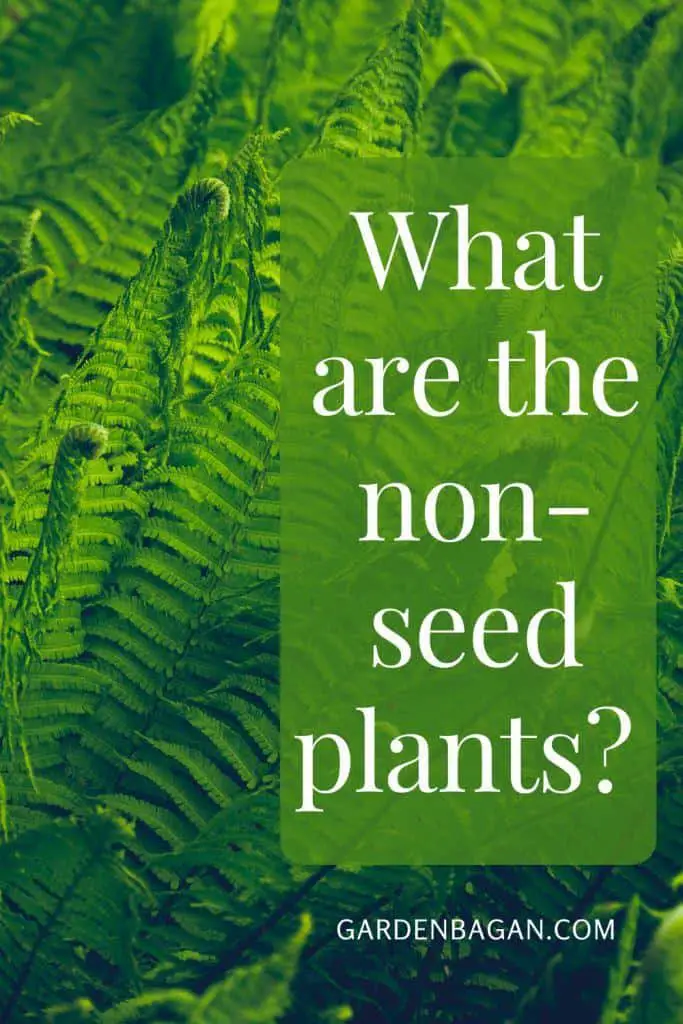What are the non-seed plants?-The Plants that reproduce asexually or the Plants without seeds. Some plants don’t need seeds to reproduce. Instead, they reproduce through their vegetative parts or spores. They use rhizomes, corms, bulbs, leaves, and sometimes roots to grow and propagate. Though many plants with asexual reproduction do produce seeds.
There are some plants specifically known as non-seed plants. These non-seed plants reproduce by spore formation. non-seed plants don’t participate in sexual reproduction. Hence no seed is formed to propagate the offsprings. They are either unicellular or multicellular. Most of the non-seed plants are autotrophs i.e., they can produce their own food.
Check out my last post: How to Grow Vinca from Cuttings: Periwinkle, Sadabhar Plants
Can we consider Banana, Rose, or Hibiscus a non-seed plant?
Plants like Banana, Rose, or hibiscus do reproduce through vegetative propagation. But such plants are not non-seed plants.
Technically these plants can form seeds and reproduce. Plants propagated through other asexual means are better for efficiency and quality perspective.
What are the non-seed plants?
non-seed plants are the plant that reproduces without seed by the help of spores. Here is a list of some non-seed plants.

Ferns
Fern is a common decorative plant. I hope most of you may have seen these plants. They are a type of non-seed plant. Ferns don’t produce seeds. Instead, they reproduce using spores.
Ferns have a cluster of leaves called fronds. There are some smaller leaves in the center called pinnae. The fronds contain spores in the blotches on the lower surface. There are many sporangia in the underside of the leaves. The spores are always protected from direct sunlight inside these sporangia.
In favorable moist climate. These spores first develop into gametophytes. The gametophyte is a heart-shaped structure. It contains only the necessary DNA strands to develop into a sporophyte. In fact, a gametophyte contains only 50% of adult genetic material.
The sporophyte is the true form of fern seed or maybe seedling. In ideal temperature and climatic conditions, these sporophytes develop into adult ferns.
Mosses
Moss is another non-seed plant. We can grow moss through cuttings but in nature, it propagates through spores.
The reproduction in mosses is very interesting. No, they don’t hook up like that. Instead, they produce separate male and female structures. Another interesting fact is that both these structures are formed in different plants or moss.
First The female structures called archegonia are produced then the male structure develops. It is known as antheridia. The antheridia releases sperms to fertilize the eggs and forms the zygote. In favorable conditions, these zygotes develop into spores and eventually form an archegonium. The archegonium is a multicellular structure that develops into a mature moss.
You will like this: Portulaca (Moss rose) – How to Grow and Care?-with Images
Liverworts
Just like mosses, Liverworts also reproduces through zygote formation. Liverworts can also propagate through their leaves.
The antheridia produce sperms which fertilize the archegonia egg and forms a zygote. This procedure requires water droplets. That’s, why liverworts are so common during the rainy season.
Horsetails
Horsetail is one very common non-seed plant. It reproduces through spore formation. The reproduction in horsetail is very simple and straight.
First, the mature plant produces spores. When the sporangia containing spores get mature, they burst and release the spores in the air. These spores developed into gametophytes. It means they form separate male and female structures.
In a moist and humid climate, these gametophytes come in contact with their counterpart and form a zygote. This zygote contains all the necessary information to develop into a new Horsetail plant.
spikemoss & quillworts
Spikemoss and quillworts reproduce asexually through spore formation. Both of these plants are members of the species Selaginella. They produce separate spores for male and female structures. The members of selaginella species form a cone-like structure that contains the spores. These cone-like structures are actually the sporangia. This cone contains megaspores that develop into female gametophytes and microspores that develop into male gametophytes.
In ideal climatic conditions, these gametophytes combine to form a zygote. Next, the zygote develops into a mature plant.
Final Words
There are many plants that come into the category of non-seed plants. I have considered only those plants that do not form any seeds. There are some other plants that can be included in this list like Christmas moss and whisk ferns. They also reproduce through spore formation like other moss and ferns. If I missed something then please let me know.
What do you think about non-seed plants? Write your thought and d vies in the comment section. I’ll be back with something more interesting. Till then keep reading keep gardening. Live green!
Reference: bioimages.vanderbilt.edu
